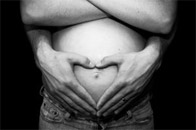In Vitro Fertilization – Hope for Infertile Couples
 Infertility has been a growing nightmare in the developed countries for some time, but medical researchers have finally made a technological breakthrough that will put an end to its reign. Introducing In Vitro Fertilization, or IVF, an idea first proposed in the 1960s by Patrick Steptoe and Dr. Robert Edwards, a psychologist from Cambridge; about ten years after the first IVF baby was born.
Infertility has been a growing nightmare in the developed countries for some time, but medical researchers have finally made a technological breakthrough that will put an end to its reign. Introducing In Vitro Fertilization, or IVF, an idea first proposed in the 1960s by Patrick Steptoe and Dr. Robert Edwards, a psychologist from Cambridge; about ten years after the first IVF baby was born.
In What Cases Is IVF Used?
When IVF was invented, its role was to aid women suffering from infertility caused by infertile or diseased uterine tubes. However, with new developments, IVF can now treat cases like endometriosis, hostile cervical mucus and other infertility related cases. It has even been tested on male partners with a low sperm count problem; although it has been proved to work, the overall success rate isn’t very high.
How Is IVF Done?
In Vitro Fertilization is carried out with a laparoscope, which is basically a form of telescope that is put inside an anesthetized woman’s abdomen to extract an eggs from the ovary just before they are about to be released naturally by ovulation. Separate sperms are collected from the male partner and then washed and diluted. The extracted eggs and the diluted sperm are then mixed in a glass dish. If fertilization between the egg and the sperm is successful, then the embryo is developed in the lab. After about two or three days, the embryo is placed in the woman’s uterus with the help of a plastic tube.
Possible Side Effects of IVF
IVF does have its boundaries and side effects though. The success rate isn’t 100% and there is a risk of ectopic pregnancy, or extrauterine pregnancy – which is a special case when the embryo is inserted and developed outside the uterine cavity; this is very dangerous because in such cases the uterine tube usually erupts. Furthermore, successful implantation and development doesn’t always end up with childbirth. Miscarriages and ectopic pregnancies are more common through IVF than when you try to conceive the natural way.
How Effective Is IVF?
There is no general trend in the success rate for In Vitro Fertilization. The numbers vary from place to place, so it’s difficult to predict the efficiency. Some figures suggest that for each happy couple who went through a successful IVF procedure, there are a few more couples who didn’t have such luck. With technological advancements, the IVF procedure is becoming more and more streamlined and efficient, but the latest facts from the important IVF centers state the following: 8-10% probability of pregnancy if only one embryo is placed in the woman’s uterine tube; 20% probability for two embryos; 30% for three embryos. Considering the dangers involved, more than three or four embryos are never inserted. Again, it must be noted that pregnancy does not always result in birth, just like in natural conditions.
IVF Gives a Hope
In Vitro Fertilization is a great technological development for the infertility treatment. The whole process requires very high tech equipment along with extremely skilled medical operators. No doctors or medical scientists can make success promises with IVF yet, but we can’t deny the fact that IVF has put a smile on many couples’ faces and is a ray of hope for many others waiting for it to be perfected.
Source of the image: sxc.hu/profile/bjearwicke.
